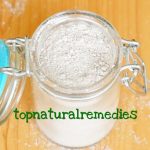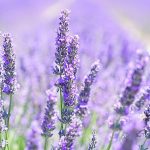Eat Foods Rich in Lysine and Arginine and Control Your Anxiety
Lysine and arginine are two aminoacids which play an important role in the control of anxiety. A deficiency of one or of both of them has been proven to raise the anxiety levels in human subjects as well as in animal models. Lysine is an essential aminoacid (the body cannot produce it by itself) and thus is has to be taken wholly from external sources, while arginine is a conditionally essential aminoacid (the body produces it, but in smaller quantities than those required physiologically), which means that it has to be consumed through diet, though a relative lack of it will not cause immediate health problems. The daily requirements vary between 800 mg and 3,000 mg, for lysine, and between 400 mg and 6,000 mg, for arginine.

Contents
Scientific studies
- A study published in Biomedical Research in 2007 demonstrated that “oral treatment with lysine and arginine reduces anxiety and basal cortisol levels in healthy humans”, a fact which makes the combination of these two aminoacids “a potentially useful dietary intervention in otherwise healthy humans with high subjective levels of mental stress and anxiety.”
- Another study, published in Nutritional Neuroscience in 2005, had previously proven that “subchronic treatment with amino acid mixture of lysine and arginine modifies neuroendocrine activation during psychosocial stress in subjects with high trait anxiety.”
- A study published in Proceedings of the National Academy of Sciences of the United States of America in 2004 proved that “lysine fortification reduces anxiety and lessens stress in family members in economically weak communities” and concluded that “some stress responses in economically weak populations consuming cereal-based diets can be improved with lysine fortification.”
- Another study, published a year earlier in the same scientific journal, had demonstrated that “lysine acts like a partial serotonin receptor 4 antagonist and inhibits serotonin-mediated intestinal pathologies and anxiety in rats” and concluded that “an increase in nutritional load of lysine might be a useful tool in treating stress-induced anxiety and serotonin-related diarrhea-type intestinal dysfunctions.”
Foods high in both lysine and arginine
- Fish and legumes are relatively rich in both lysine and arginine, with fish being more rich in lysine, and legumes, more rich in arginine. For example, 100 g of tuna fish canned in oil contain 2675 mg of lysine and 1743 mg of arginine, while 100 g of raw soybeans contain 2706 mg of lysine and 3153 mg of arginine.
Foods high in lysine and low in arginine
- Cheese is the best food if you need more lysine and less arginine. For example, 100 g of shredded parmesan contains 3844 mg of lysine and only 1537 mg of arginine, 100 g of edam contains 2660 mg of lysine and only 964 mg of arginine, and 100 g of gouda contains 2654 mg of lysine and only 962 mg of arginine.
Foods high in arginine and low in lysine
- There are certain situations (a congestive heart failure, for example) when the body needs much more arginine than it does on normal basis. That’s when you should eat more pumpkin and squash seed kernels (5418 mg of arginine / 100 g and 2463 mg of lysine / 100 g), dried walnuts (3618 mg of arginine / 100 g and 713 mg of lysine / 100 g) or oil-roasted peanuts (3151 mg of arginine / 100 g and 946 mg of lysine / 100 g). And, of course, if you only need a lysine supplementation, these are the foods you should avoid for a while, for the reason presented hereinafter.
Precautions
Lysine and arginine share common metabolic pathways and thus high levels of arginine may lower the lysine levels. Make sure you’ve consumed enough lysine rich foods before you begin eating more arginine rich foods.



